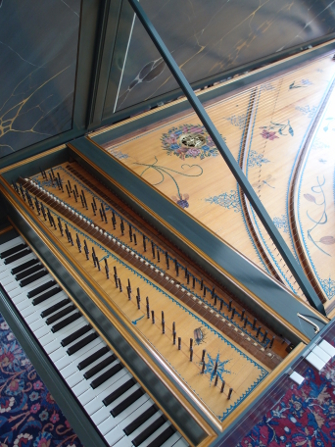 My harpsichords are replicas that are true to the originals and their timbres.
My harpsichords are replicas that are true to the originals and their timbres.
I aim at making harpsichords that are built in the same way and with the same methods as were used by the great masters of the 17th and 18th centuries.
That's the reason why, when it comes to my instruments, I only follow my basic principle which is to meet the requirements of the original instrument. I strive to catch the soul and spirit of the original as well as its specific characteristics, and to render all this in the replica.
In order to live up to the requirements of an original, one needs – as I think – far more than a construction drawing. I try in fact to entirely assimilate the instrument in my observations. That's why I spend a lot of time on trying to gather all-embracing impressions from the original.
I can say from my experience that this inner image is much more decisive than slavishly sticking to measurements – because in the end, what makes a good replica of a harpsichord is not only the combination of measures and materials.
One of my specialties I have found in working with original harpsichords, is a special kind of soundboard finishing. This refinement develops the resonance of what anyone knows, who is concerned with historical harpsichords; besides of this there is for my taste also a positive optical side effect. This sound optimization of the soundboard is primarily in an increased brilliance and resonance, just a very special tonal coloration, the most clearly and unmistakably evident in the treble. This method I also use to give my harpsichords ability and property of an original harpsichord from the 17th / 18th century. Whether this method is scientifically verifiable, is for me not in the focus - what is more desirable than having a replica with the original sound....
Here is an interview with Florian Messner on the Australien Radio (SBS) (German language):